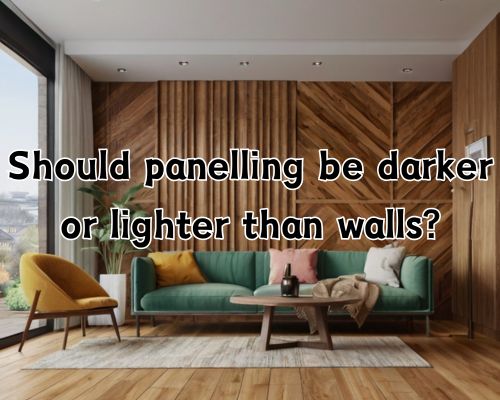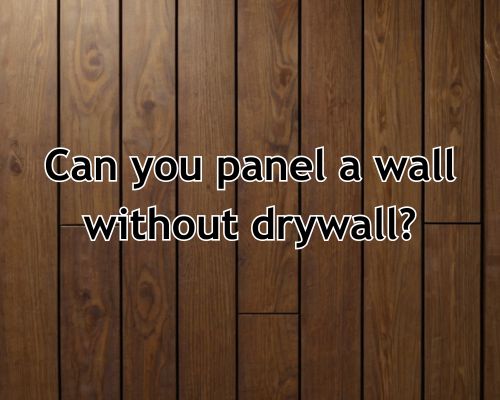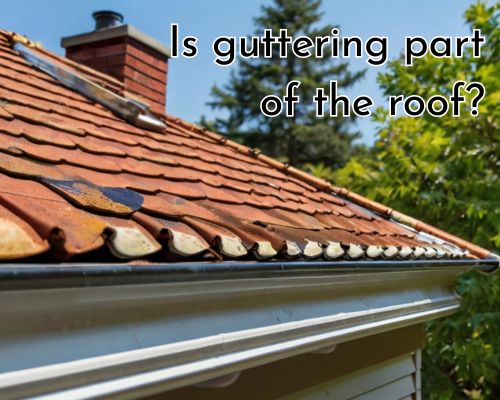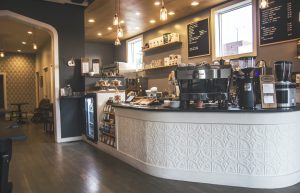- May 15, 2025
- By Rebecca Washington
- Uncategorized
How Much Does a 1500 Square Foot Shingle Roof Cost in New Jersey?
How Much Does a 1500 Square Foot Shingle Roof Cost in New Jersey?
When it comes to home improvement in New Jersey, one of the most significant—and necessary—investments is replacing your roof. If you’re asking “How much does a 1500 square foot shingle roof cost?”, you’re not alone. Whether you’re nestled in the leafy suburbs of Montclair or coastal towns like Asbury Park, understanding the full breakdown of roofing costs in the Garden State can help you plan and budget more effectively.

With Charles Jimerson of CJ Commercial Roofing NJ, let’s explore everything homeowners need to know, from shingle types to labor costs, permit fees, and regional price variations in New Jersey.
The Average Cost of a 1500 Sq Ft Shingle Roof in New Jersey
For a 1500 square foot shingle roof, the average replacement cost in New Jersey typically ranges from $6,500 to $11,000, depending on various factors. That puts the per-square-foot cost between $4.30 and $7.30, a number that can swing higher based on material upgrades or structural complexity.
Cost Breakdown by Shingle Type:
| Shingle Type | Cost per Sq Ft (NJ Avg) | Total Cost (1500 sq ft) |
|---|---|---|
| 3-tab Asphalt | $4.30 – $5.50 | $6,450 – $8,250 |
| Architectural | $5.50 – $7.30 | $8,250 – $10,950 |
| Luxury Asphalt | $7.00 – $9.00 | $10,500 – $13,500 |
🔎 Local Insight: In cities like Newark, Jersey City, and Edison, prices trend toward the higher end due to increased labor costs and permitting fees. Suburban and rural counties such as Sussex or Warren County may see lower average installation rates.
Factors That Influence Roofing Costs in New Jersey
1. Roof Complexity and Pitch
A steep or multi-faceted roof increases labor time and risk, which inflates installation costs. A simple gable roof is cheaper than a hip or cross-hip roof with multiple angles or dormers.
2. Removal of Old Roofing
In New Jersey, most towns require the removal of old shingles if installing new ones, which adds $1.00 – $2.00 per square foot. For a 1500 sq ft roof, that’s an additional $1,500 to $3,000.
3. Labor Costs
Labor rates in New Jersey average $50 to $75 per hour, and roofing crews usually work in teams. Local roofing contractors in Middlesex County, Bergen County, and Monmouth County often charge more due to unionized labor or stricter local building codes. See CJ Commercial Roofing NJ for more.
4. Underlayment and Ventilation
Adding premium underlayment, roof decking repairs, ridge vents, or attic ventilation systems can increase the total price by $800 to $1,500.
5. Permits and Inspections
Each New Jersey municipality has its own permit fee structure. For example:
- Princeton: ~$250 for a roofing permit
- Toms River: ~$150 – $200
- Trenton: May require additional structural inspection
Don’t skip this step—non-compliance can delay resales and trigger fines.
Regional Price Variation in New Jersey
Because of its geographic diversity and proximity to metro hubs, roofing costs fluctuate across North, Central, and South Jersey.
- North Jersey (e.g., Hoboken, Paterson): Higher labor & material transport costs
- Central Jersey (e.g., Edison, Freehold): Balanced pricing
- South Jersey (e.g., Vineland, Cherry Hill): Slightly lower due to lower labor costs
💡 Pro Tip: Request quotes from at least 3 licensed roofing contractors across different counties for comparison.
Additional Cost Considerations
🛠️ Roof Decking Repair
If there’s water damage or rot beneath the shingles, you might need new sheathing. Expect an added $1.50 – $3.50 per sq ft, or $2,250 – $5,250 for full decking replacement.
💨 Roof Ventilation
Modern codes and energy efficiency concerns make proper ventilation critical. Ridge vents, soffit vents, and power vents can add $300 – $800.
💧 Gutter Replacement
Bundling new gutters with roof replacement is common. Seamless aluminum gutters average $5 – $9 per linear foot in New Jersey, totaling around $1,200 – $2,000 for a 1500 sq ft house.
What About Insurance?
Most homeowner insurance policies in New Jersey do not cover wear-and-tear roof replacements, but may cover storm damage or fallen tree impact. Ensure you:
- Document the damage
- File within your provider’s timeline
- Use a licensed roofer for estimates (many offer free roof inspections)
How to Find a Roofing Contractor in New Jersey
When evaluating roofing contractors, look for:
- NJ Division of Consumer Affairs registration
- Positive local reviews (Google, Angi, BBB)
- Insurance and licensing
- Warranties on both materials and workmanship
🧠 Salient local mentions:
- GAF-certified roofers (GAF is headquartered in Parsippany, NJ)
- Local players like Biondo Contracting (East Brunswick) or Trinity Roofing & Restoration (South Jersey)
Saving on Roof Replacement in New Jersey
While costs can’t be eliminated, you can trim them:
- Schedule during off-peak months (late winter or early spring)
- Bundle services (roof + gutters or siding)
- Ask about energy-efficiency tax credits if upgrading to reflective shingles
Final Thoughts
So, how much does a 1500 square foot shingle roof cost in New Jersey? You’re realistically looking at $6,500 to $11,000, with variables such as material, labor, permits, and roof design influencing the final bill.
By working with trusted, local New Jersey roofing contractors, and knowing the breakdown of expenses, you can better manage your home improvement budget—and protect your investment for years to come.
📌 Key Takeaways:
- Average cost: $6,500 – $11,000
- Shingle types: 3-tab, architectural, luxury asphalt
- Factors: labor, materials, permits, ventilation
- Local rates: Higher in North Jersey, lower in South
- Pro tip: Always get multiple quotes and check for certifications
…
- May 13, 2025
- By Rebecca Washington
- Uncategorized
What Is the Difference Between a Roofer and a Roofing Contractor? | West Palm Beach, FL Guide
What Is the Difference Between a Roofer and a Roofing Contractor? | West Palm Beach, FL Guide
If you’re a homeowner in West Palm Beach, Florida, planning a new roof installation, repair, or even a basic inspection, you’ve likely come across two terms that might seem interchangeable: roofer and roofing contractor. But are they the same? Not quite.

Understanding what is the difference between a roofer and a roofing contractor can help you make informed decisions, hire the right professional for your roofing needs, and avoid potential pitfalls. In this article, we’ll clarify the distinction, explore the roles and responsibilities of each, and help West Palm Beach residents understand who to call for their next roofing job.
Roofer vs. Roofing Contractor: The Core Distinction
Let’s get straight to the point.
- A roofer is typically the individual who performs the physical labor on a roof—installing shingles, repairing leaks, replacing flashing, and handling hands-on tasks.
- A roofing contractor, on the other hand, is usually a licensed business entity or company like Star Roofing that takes on roofing projects, manages the workforce (including roofers), oversees logistics, pulls permits, and ensures code compliance.
Think of it like this: if your roof is a stage production, the roofer is the actor on stage, and the roofing contractor is the director managing the entire performance.
Who You Hire in West Palm Beach Matters
In Palm Beach County, licensing, permitting, and insurance requirements differ between individual workers and contracting companies. The Florida Department of Business and Professional Regulation (DBPR) issues licenses for roofing contractors, ensuring they meet specific training and experience criteria. Roofers may or may not be licensed individually, but they often work under a licensed contractor’s supervision.
When hiring for a major job—like a complete roof replacement in West Palm Beach’s hurricane-prone climate—you’ll want a licensed roofing contractor. Not only are they legally authorized to sign contracts and pull permits, but they’re also familiar with Florida Building Code, which governs everything from wind mitigation to underlayment requirements.
Why the Distinction Matters in Practice
1. Permits and Compliance
A roofer can’t legally pull permits in Florida. A roofing contractor must be the one to file with the City of West Palm Beach or Palm Beach County Building Division. Without proper permits, you could face fines or even have to redo work that doesn’t meet local codes.
2. Insurance and Liability
Contractors are generally required to carry general liability insurance and workers’ compensation. If a roofer working independently is injured on your property, and they’re uninsured, you could be held liable. Always confirm that your contractor is properly insured—especially in storm-prone areas like West Palm Beach.
3. Scope of Work
If you need a quick shingle repair on your Lake Worth bungalow or patching after storm damage in Boynton Beach, a roofer might be enough—if they’re working under a licensed contractor. But for full-scale jobs—such as replacing your home’s asphalt, tile, or metal roofing system—only a roofing contractor has the legal and logistical ability to deliver a complete, code-compliant solution.
Local Roofing Dynamics in West Palm Beach
The South Florida roofing industry is highly regulated for a reason: the weather. With hurricane season bringing wind, rain, and hail to the area, homeowners must work with professionals who understand wind load standards, waterproofing protocols, and impact-resistant materials.
Licensed roofing contractors in West Palm Beach are also familiar with Miami-Dade-approved roofing systems, which often exceed standard state code. These insights aren’t just valuable—they’re often required for a roofing job to be insurable.
Questions to Ask Before Hiring
When you’re deciding between hiring a roofer or working with a roofing contractor, consider asking:
- Are you licensed by the State of Florida?
- Can you provide proof of liability insurance and workers’ comp?
- Will you be pulling the necessary permits?
- Who will be physically doing the work—your team or subcontractors?
- Are you familiar with Palm Beach County’s specific roofing codes?
- Do you offer warranties on labor and materials?
Real-World Example: Choosing the Right Pro
Imagine you’re in Downtown West Palm Beach and notice water spots on your ceiling after a summer storm. A quick inspection shows cracked tiles and flashing deterioration. A roofer might offer to fix it for cash “on the side.” But without permits or guarantees, you’re exposed to:
- Code violations
- Insurance claim denial
- Liability in case of injury
- Shoddy workmanship without a warranty
Instead, hiring a licensed roofing contractor especially Star Roofing ensures a legitimate, insurable, and lasting repair—often backed by manufacturer warranties and local references.
Bonus Tip: How to Verify Licensing in Florida
You can easily verify a contractor’s license through the DBPR License Lookup Tool (MyFloridaLicense.com). Be sure the business is listed under “Certified Roofing Contractor” and active in Palm Beach County.
Summary: Choose the Right Professional for the Job
So, what is the difference between a roofer and a roofing contractor?
- A roofer performs the hands-on labor but may not be licensed or authorized to manage a roofing project independently.
- A roofing contractor is a licensed professional or company that oversees roofing projects from start to finish, ensuring compliance with local laws, safety protocols, and quality standards.
In West Palm Beach, where roofing is a high-stakes job due to severe weather risks, always prioritize working with a licensed roofing contractor. It’s not just about finishing the job—it’s about doing it safely, legally, and in a way that adds long-term value to your home.
Final Call-to-Action
If you’re looking for trusted, licensed roofing contractors in West Palm Beach, Florida, who understand the unique local climate, code requirements, and roofing systems, don’t gamble with your property. Choose professionals who are certified, insured, and committed to excellence. Your roof—and your peace of mind—will thank you.
…
- May 10, 2025
- By Rebecca Washington
- Uncategorized
How Much Should a Gutter Job Cost? A Complete Guide for West Palm Beach, Florida Homeowners
How Much Should a Gutter Job Cost? A Complete Guide for West Palm Beach, Florida Homeowners
When it comes to home maintenance in West Palm Beach, Florida, understanding how much a gutter job should cost is essential. With South Florida’s frequent thunderstorms, hurricanes, and subtropical climate, having a functional gutter system isn’t just a matter of curb appeal—it’s a critical part of protecting your home from water damage, foundation erosion, and mold.

But what exactly influences the cost of a gutter installation or replacement? And how do the unique weather conditions and housing styles in West Palm Beach affect pricing?
With Mike Owen from Gutters of West Palm Beach, we’ll break down the key factors that determine the price of a gutter job, provide realistic cost ranges for local homeowners, and help you navigate your options whether you’re considering aluminum gutters, seamless systems, or a custom gutter installation in Palm Beach County.
What Is the Average Cost of a Gutter Job in West Palm Beach?
In West Palm Beach, the average cost of a gutter job typically ranges from $1,200 to $2,800, depending on the size of your home, the type of materials used, and whether you’re replacing old gutters or installing a new system from scratch.
Cost by Linear Foot
Most gutter companies charge per linear foot, with prices ranging from:
- $5 to $8 per linear foot for standard aluminum gutters
- $9 to $16 per linear foot for copper or steel gutters
- $4 to $7 per linear foot for vinyl gutters (less common in Florida due to heat)
A typical single-story home in West Palm Beach with a roof perimeter of about 150 linear feet can expect to pay:
- $750 to $1,200 for basic aluminum gutters
- $1,350 to $2,400 for premium materials or seamless systems
These costs can rise if you include gutter guards, custom downspouts, or have a complex roofline.
Key Factors That Influence Gutter Job Costs
1. Material Selection
The type of material you choose greatly impacts the price:
- Aluminum gutters are the most popular in South Florida for their durability and resistance to rust.
- Copper gutters are aesthetically pleasing and long-lasting but significantly more expensive.
- Vinyl gutters are budget-friendly but can warp in the Florida heat.
- Galvanized steel is durable but prone to rust if not properly coated.
2. Gutter Type
- Seamless gutters are custom-fitted on-site and reduce the risk of leaks, making them ideal for Florida’s heavy rainfall—but they cost more upfront.
- Sectional gutters are cheaper but can lead to maintenance issues over time.
3. Roof Height and Accessibility
Two-story homes or roofs with difficult access increase labor costs. Contractors may charge additional fees for safety equipment or scaffolding.
4. Labor and Local Rates
The labor market in Palm Beach County also affects prices. Licensed gutter contractors in West Palm Beach typically charge $50 to $85 per hour, and jobs usually take one to two days to complete.
Regional Considerations: Why Location Matters
Weather Demands in South Florida
West Palm Beach experiences heavy rainfall, hurricane threats, and high humidity. This increases the importance of choosing materials that resist corrosion and drain efficiently. Gutters in this region must be installed with proper pitch and sufficient downspouts to manage the intense downpours typical during the wet season.
Local Building Codes
Palm Beach County has strict building regulations, especially in wind zones. Installers must comply with Florida Building Code (FBC) guidelines, which may add inspection and permitting fees. These costs can range from $150 to $400, depending on the job’s complexity.
Home Styles in West Palm Beach
From Mediterranean revival villas in El Cid to ranch-style homes in Lake Clarke Shores, local architecture often involves tile roofing or unique facades. This can affect gutter placement and type, impacting the total job cost.
Hidden Costs and Add-Ons
Don’t forget to budget for optional yet valuable enhancements:
- Gutter guards: $7 to $12 per foot – reduce debris buildup and cleaning frequency
- Downspout extensions: $10 to $30 each – important for directing water away from the foundation
- Rain barrels: $50 to $200 – great for sustainable water reuse in tropical landscapes
- Fascia or soffit repairs: May be necessary if water damage is discovered during the job
What to Look for in a Gutter Contractor in West Palm Beach
Choosing the right gutter installation company is just as important as choosing the material. Look for:
- Licensing and insurance (verify via the Florida DBPR website)
- Local experience with South Florida weather conditions
- Positive reviews on platforms like Yelp, Angi, and Google
- Transparent pricing and detailed written estimates
- Warranties on both labor and materials
Consider local specialists like:
- Mike Owen from Gutters of West Palm Beach
- Seamless Gutters of South Florida
- Rain Shield Gutters West Palm Beach
Ask about their experience with wind mitigation systems, which can even qualify you for home insurance discounts.
DIY vs. Professional Gutter Installation
While DIY may seem cheaper, improper installation can lead to foundation damage, fascia rot, and mold growth—all far more expensive to fix.
In South Florida’s climate, hiring a professional ensures:
- Proper slope and alignment
- Secure fastenings to withstand tropical storms
- Compliance with county regulations
Gutter Maintenance Tips for West Palm Beach Homeowners
To extend the life of your gutters and get the best ROI on your installation:
- Clean gutters twice a year, especially before and after hurricane season
- Inspect for loose fasteners or sagging sections
- Install gutter guards to minimize debris from palm trees and sea grape leaves
- Check downspouts to ensure proper water flow
Final Thoughts: What Should You Expect to Pay?
So, how much should a gutter job cost in West Palm Beach, Florida?
A fair expectation is:
- $1,200 to $1,800 for a basic aluminum gutter system
- Up to $3,000 or more for premium, seamless, or custom options with extras
Investing in quality gutters tailored to your local weather conditions is crucial. Think of it as long-term protection for your home, especially in a coastal city where weather can be as unpredictable as the real estate market.
For the best outcome, get multiple estimates, compare warranties, and prioritize contractors familiar with Palm Beach County regulations.
Frequently Asked Questions
Q: Do gutters add value to my home in Florida?
A: Absolutely. Gutters protect the structure, reduce mold risk, and are considered a must-have for insurance inspections.
Q: Are seamless gutters worth the cost?
A: Yes. They reduce leaks and last longer, especially in storm-prone areas like West Palm Beach.
Q: How long does a typical gutter job take?
A: Most jobs are completed within 1 to 2 days, depending on home size and roof complexity.
…
- May 10, 2025
- By Rebecca Washington
- Uncategorized
How to Create a Yoga Studio Website in Mornington, Australia: A Comprehensive Guide
How to Create a Yoga Studio Website in Mornington, Australia: A Comprehensive Guide
In today’s digital age, having a professional and user-friendly website for your yoga studio is essential. It serves as the first point of contact for potential students and is a reflection of your brand. Whether you’re based in Mornington, Australia, or elsewhere, creating a yoga studio website is a strategic move that can help you reach a wider audience, promote your classes, and build a strong online presence. This article will guide you step-by-step on how to create a yoga studio website that is SEO-optimized, user-friendly, and ready to attract new clients.

1. Understand Your Target Audience in Mornington, Australia
Before diving into the design and functionality of your website, it’s essential to define your target audience. For yoga studios in Mornington, Australia, your audience will likely include local residents looking for mindfulness and fitness options in the area. Consider the age group, lifestyle, and interests of your potential clients. Are they beginners, advanced practitioners, or seeking specific types of yoga (e.g., Vinyasa, Hatha, Yin, etc.)? Tailoring your content to meet their needs will ensure that your website speaks directly to your audience.
By understanding your target demographic, you can use location-based keywords in your content to attract Mornington locals. For instance, incorporating terms such as “yoga classes Mornington” or “best yoga studio Mornington” will help you rank higher in local search results.
2. Choose the Right Website Builder
Choosing a website builder that fits your needs and skills is crucial. You don’t need to be a web developer to create a beautiful yoga studio website. Many user-friendly website builders are available that offer customizable templates specifically for fitness and yoga studios. Some popular options include:
- Wix: Known for its drag-and-drop functionality, Wix is perfect for beginners. It offers customizable templates, including those designed for yoga studios.
- Squarespace: This platform provides elegant and clean templates with strong SEO features, ideal for yoga studios that want a minimalist design.
- WordPress: If you have some technical know-how or are willing to hire a developer, WordPress offers unlimited customization possibilities, as well as numerous plugins for SEO optimization.
Once you’ve selected a website builder, choose a template that resonates with your yoga studio’s branding and ethos. Look for designs that are clean, calming, and easy to navigate, with plenty of white space to enhance the feeling of serenity that yoga promotes. Visit website for more.
3. Design Your Yoga Studio Website with User Experience in Mind
Your website’s design plays a critical role in attracting and retaining visitors. Yoga is all about calmness, mindfulness, and connection, so your website should reflect these values. Keep the following design principles in mind:
- Responsive Design: Ensure that your website is mobile-friendly. Many people will visit your yoga studio’s website from their smartphones, so it’s important that your site looks great on all screen sizes.
- Simple Navigation: Your website should be easy to navigate. Use a simple menu structure that allows users to quickly find essential information like class schedules, pricing, instructors, and contact details.
- Visual Appeal: Incorporate high-quality images of your studio, yoga classes, and instructors to create an authentic connection with your potential clients. Include visuals that represent the Mornington area, such as beach or nature scenes, to evoke a sense of place.
- Branding: Make sure the design reflects the tone of your studio. Use soft colors and peaceful imagery to align with the relaxing nature of yoga. Incorporating subtle references to the Mornington Peninsula’s natural beauty can also help create a sense of local connection.
4. Optimize Your Website for SEO
SEO (Search Engine Optimization) is the key to making your website discoverable in search engine results. For a yoga studio in Mornington, Australia, it’s essential to optimize your website for both global and local searches. Here’s how you can achieve this:
- Use Location-Specific Keywords: Incorporate phrases like “yoga studio Mornington,” “yoga classes near Mornington,” or “best yoga instructors in Mornington” throughout your website content. Local SEO is a powerful way to attract people in your area who are searching for yoga classes.
- On-Page SEO: Ensure that each page of your website is optimized with relevant keywords, including in the meta titles, headers, image alt tags, and URL structure. For example, your class schedule page can be optimized with the keyword “Mornington yoga schedule.”
- Create Local Listings: Claim your Google My Business listing and ensure that your business name, address, and phone number (NAP) are consistent across all online platforms. Include your yoga studio in local directories such as Yellow Pages or Yelp to improve your local search rankings.
- Optimize Your Blog: A blog is an excellent way to provide valuable content and boost your SEO. Write informative articles on topics like “benefits of yoga in Mornington” or “how yoga can improve mental health in the community.” This will help drive traffic to your website and position you as an expert in your field. Visit website for more.
5. Integrate Booking and Payment Systems
One of the main functions of a yoga studio website is to allow potential clients to book classes easily. Integrating an online booking and payment system can streamline the process for both you and your clients. Many website builders and platforms offer integrations with booking systems like Mindbody or Acuity Scheduling.
When choosing a booking system, make sure that it’s user-friendly, secure, and mobile-friendly. The goal is to provide a smooth experience for users to book classes, pay for memberships, or purchase gift cards.
6. Add Testimonials and Reviews
Social proof is a powerful tool for building trust with new clients. Adding testimonials from satisfied students or positive reviews from platforms like Google or Facebook can increase credibility and attract more visitors to your site.
Encourage your current students to leave reviews by offering a discount or incentive. You can also add a dedicated “Testimonials” page where visitors can read about the experiences of other clients.
7. Content Strategy and Blogging
A blog can serve as a vital part of your SEO strategy and connect you with your community. Share useful information about yoga, mindfulness, and fitness, while also integrating content that speaks to the local culture of Mornington. For example, write articles on how yoga can enhance well-being in the coastal town, or feature local events and activities that align with the yoga lifestyle.
8. Keep Your Website Updated
Once your website is live, the work doesn’t stop there. Keep your content fresh and updated by regularly posting blog articles, updating your class schedule, and offering seasonal promotions. An up-to-date website encourages repeat visitors and signals to Google that your website is active, which can boost your rankings.
Conclusion
Creating a yoga studio website in Mornington, Australia, requires careful planning, attention to detail, and a clear understanding of your target audience. By choosing the right website builder, optimizing your content for SEO, offering a user-friendly experience, and incorporating local elements, your website can become a powerful marketing tool to attract and retain students. Remember, your website is a reflection of your yoga studio and brand, so make sure it resonates with your community and promotes the benefits of yoga in a serene, calming environment.
By following the tips and strategies outlined in this article, you can build a yoga studio website that not only meets the needs of your students but also ranks well in search engines, ensuring your business thrives in the competitive market of Mornington, Australia.
…
- May 9, 2025
- By Rebecca Washington
- Uncategorized
How Much Do Yoga Teachers Get Paid Per Class in Australia? A Look into Mornington’s Yoga Scene
How Much Do Yoga Teachers Get Paid Per Class in Australia? A Look into Mornington’s Yoga Scene
Yoga has grown significantly in popularity in Australia, especially in areas like Mornington, where residents embrace holistic health and wellness. If you’re thinking about becoming a yoga teacher or you’re just curious about how much yoga instructors earn, you’ve come to the right place. In this article, we’ll explore the factors that influence a yoga teacher’s pay per class in Australia, particularly in Mornington, and break down what you can expect in terms of salary, benefits, and career prospects.

Understanding Yoga Teacher Pay in Australia
Before diving into specific numbers, it’s important to understand how yoga teacher pay structures work. In Australia, yoga teachers can be paid in several ways, depending on the location, the yoga studio, and the teacher’s level of experience. Generally, yoga teachers in Australia are paid per class, which means that their income can vary based on the number of classes they teach per week, the studio’s pay structure, and the location of the classes.
In metropolitan areas like Melbourne, yoga instructors might earn a higher rate compared to regional areas, but the pay scale is still somewhat consistent across the country. Based on Bikram Yoga Mornington, in Mornington, which offers a mix of urban and rural environments, pay tends to reflect the local economy while also aligning with national averages for yoga teacher salaries.
Average Pay for Yoga Teachers in Australia
The average pay for yoga teachers across Australia generally ranges from $30 to $100 per class. However, these figures can fluctuate depending on factors such as the teacher’s experience, the studio’s pricing structure, and the class type. For example:
- Entry-level yoga teachers in Australia, especially in regional areas like Mornington, may start at around $30 to $50 per class. These teachers may be newer to the industry or still building a student base.
- Experienced teachers with certifications and a strong student following can command between $50 to $80 per class, depending on the studio and their reputation.
- Highly experienced or specialized teachers in areas such as restorative yoga, yoga therapy, or corporate yoga can earn up to $100 per class, particularly in high-demand studios or in private sessions.
Location and Local Economy: The Impact of Mornington
While yoga salaries in Australia tend to follow national trends, local conditions can play a significant role in determining rates. In Mornington, a coastal town near Melbourne, the cost of living is somewhat lower than in the bustling metropolis. This means that while yoga teachers in Mornington may not earn as much as those in the heart of Melbourne, they often experience a more relaxed lifestyle and fewer demands in terms of commuting and studio overhead.
Local factors that affect yoga teacher pay in Mornington include:
- Population Size and Demand: Mornington’s population is about 20,000, which means yoga teachers might have a smaller but dedicated client base. While this can sometimes limit the number of classes a teacher can book, the demand for health and wellness activities like yoga is growing.
- Tourism and Seasonal Changes: Being a coastal region, Mornington attracts tourists, especially during the summer months. This influx can increase the demand for yoga classes, providing opportunities for teachers to earn more during peak seasons.
- Studio Pricing: In Mornington, yoga studios often have lower overhead costs compared to larger cities, which can allow them to offer more affordable yoga classes. However, this can also mean that teachers might not receive as high of a rate per class as they might in metropolitan areas, though the lifestyle balance could compensate for this.
The Different Yoga Class Formats and Their Pay
Yoga teachers in Mornington may teach various types of classes, each with its own pay structure. These include:
- Group Classes: Most yoga instructors in Australia teach group classes, which typically have a set price per class. In Mornington, these rates can range from $35 to $75 per class, depending on the studio and the instructor’s experience.
- Private Classes: Private yoga sessions tend to pay much better per hour, with rates typically between $80 and $150 per session. Teachers who build a loyal client base can significantly increase their earnings through private classes. For example, a teacher in Mornington who offers private lessons may be able to earn more in a single session than they would from teaching a group class.
- Corporate Yoga: Yoga teachers who specialize in corporate wellness programs can expect higher pay rates, particularly in cities like Melbourne. In Mornington, this type of yoga teaching is less common but can be a growing niche. Corporate yoga instructors can earn between $100 to $200 per class.
- Workshops and Retreats: Offering specialized workshops or yoga retreats is another way yoga teachers can increase their income. In Mornington, where the natural surroundings are ideal for weekend retreats, teachers can earn between $100 and $300 per day hosting these events. These opportunities are more seasonal but can be quite lucrative.
Factors That Influence Yoga Teacher Pay
Several key factors influence how much yoga teachers get paid per class in Australia:
- Experience and Qualifications: Teachers with more experience and advanced certifications typically command higher pay. For instance, those who have completed a 500-hour certification or have additional expertise in areas like yoga therapy or prenatal yoga may be able to charge higher rates per class.
- Location and Studio Size: Larger, more established yoga studios in Mornington may offer a higher pay rate to attract experienced teachers. Smaller studios or those in less central locations may offer lower rates but provide more flexibility and a closer-knit community of students.
- Class Type and Specialization: As mentioned, specialized classes such as yoga for athletes, seniors, or therapeutic yoga can often command a premium, as they require additional expertise.
- Reputation and Demand: The more well-known a yoga teacher is, the more they can demand in terms of pay. Building a loyal client base and marketing effectively can greatly impact how much teachers earn per class.
How to Increase Your Yoga Teacher Pay in Australia
If you’re looking to boost your pay as a yoga teacher, there are several strategies to consider:
- Build Your Personal Brand: Building a personal brand, especially through social media, can help increase demand for your classes. Offering online classes, creating a yoga blog, or posting yoga tips on Instagram can all contribute to your growth and reputation.
- Diversify Your Offerings: By offering specialized classes like prenatal yoga, yoga for seniors, or meditation workshops, you can tap into new markets and increase your earning potential.
- Host Retreats and Workshops: Organizing yoga retreats and workshops in Mornington’s scenic locations can provide additional income streams. Teachers can also team up with local accommodation providers to offer all-inclusive packages, which can raise their rates.
- Offer Private Lessons: Private lessons tend to pay much higher than group classes. If you build a loyal client base, this can significantly increase your earnings per hour.
For more, visit Bikram Yoga Mornington.
Conclusion
Yoga teaching in Mornington, Australia, offers a fulfilling career with a decent pay range depending on various factors, such as experience, specialization, and the type of classes taught. While the rates may be slightly lower in regional areas compared to larger cities like Melbourne, the lifestyle balance, sense of community, and potential for private classes and retreats make it an attractive career for many yoga teachers. By continuing to build your skill set, reputation, and client base, you can find yourself earning a comfortable income in this thriving field. Whether you’re just starting out or already an experienced teacher, the potential for a successful and rewarding yoga career in Mornington is certainly within reach.
…
- May 7, 2025
- By Rebecca Washington
- Uncategorized
Should Panelling Be Darker or Lighter Than Walls? | Expert Interior Design Tips in Mornington, Australia
Should Panelling Be Darker or Lighter Than Walls? | Expert Interior Design Tips in Mornington, Australia
In the coastal haven of Mornington, Victoria, where sunlight dances through homes with open floor plans and sea breezes are a daily delight, the question of “Should panelling be darker or lighter than walls?” holds more weight than just aesthetics. Whether you’re building, renovating, or redecorating, the interplay between wall colour and panelling shapes how your space feels—spacious or snug, traditional or modern, bold or serene.

With Leona Rodriguesi of Mornington Cabinet Makers, we’ll dive into the nuances of interior design, tailored to Mornington’s unique climate, architectural styles, and natural light conditions. We’ll explore the functional and visual impacts of colour contrast, local design trends, and the psychological principles of colour to help you make the right decision for your home or office.
Understanding Panelling: A Design Staple in Mornington Homes
Wall panelling has seen a resurgence in Mornington Peninsula interior design, particularly in styles like Hamptons, Scandi-coastal, and modern farmhouse, all popular in the region. Common types include:
- Wainscoting
- Shiplap
- Board and batten
- V-groove timber panels
- Beadboard
These elements not only add texture and architectural depth but also offer a chance to introduce colour contrast and personality into a room.
The Psychology of Colour and Light in Coastal Homes
Before deciding whether your panelling should be darker or lighter than your walls, it’s essential to understand how colour psychology interacts with natural light, especially in coastal towns like Mornington.
- Lighter panelling gives the illusion of larger, airier spaces, making it ideal for smaller rooms or areas with limited light.
- Darker panelling adds depth, drama, and sophistication, often creating a grounding effect in more spacious areas.
In Mornington’s seaside homes, which often feature generous glazing and north-facing windows, leveraging natural light can dramatically shift how colours behave throughout the day. A light blue panel in the morning might take on a grey tone by evening, while deep charcoal may look softer in direct sunlight.
When Should Panelling Be Lighter Than Walls?
In many Mornington coastal homes, especially those with open-plan living areas and lower ceilings, designers often choose lighter panelling for several reasons:
1. To Open Up the Space
Using white or off-white panelling against mid-tone or darker walls helps bounce light and make a room feel more expansive. This is particularly effective in beachside cottages or weatherboard homes with smaller rooms.
2. To Enhance a Coastal or Scandinavian Look
Both coastal chic and Scandi styles, staples of Mornington design, favour pale, minimalist colour schemes. In these aesthetics, white VJ panelling paired with soft pastel or muted neutral walls creates a clean and breezy vibe.
3. To Highlight Wall Colour Without Overwhelming
Lighter panels act as subtle frames, letting statement wall colours shine. This balance is popular in Mornington’s boutique Airbnb properties, where each room is designed to photograph beautifully while remaining soothing to guests.
When Should Panelling Be Darker Than Walls?
There are also compelling reasons to flip the contrast, especially when seeking bold or moody interiors.
1. To Create Grounding or Sophistication
Charcoal or navy panelling against pale grey or white walls can create a strong architectural statement, adding visual weight to a room. This works well in Mornington’s new builds with high ceilings or open foyers.
2. To Frame Views or Artwork
Darker panels can lead the eye and create visual interest without overpowering the space. In homes with bay or ocean views, darker lower walls naturally draw attention to the upper half of the room—where large windows or framed art often reside.
3. For Historical Accuracy in Restorations
Older Victorian or Federation-style homes common in Mount Martha and Mornington East may benefit from historically accurate colour schemes. In these cases, deeper panelling hues like bottle green or oxblood red are often paired with lighter wall tones, reflecting the rich character of the era.
For professional needs, visit https://morningtoncabinetmakers.com.au/.
Considerations for Mornington’s Unique Environment
Local context is everything in design. Here are a few regional factors that should influence your decision:
🌞 Sunlight and Orientation
- North-facing rooms get more light year-round. This gives flexibility to use darker panelling.
- South-facing rooms in Mornington can appear dull without sufficient lighting. Lighter panelling can help brighten these areas.
🌊 Coastal Conditions
- High humidity and salt air can impact finishes. Use moisture-resistant MDF or PVC panelling, especially in bathrooms and entryways.
- Whites and off-whites with a hint of warmth (like Dulux Lexicon Quarter or Antique White USA) work well to counteract the cool tones brought in from sea light.
🏡 Architectural Trends in Mornington
- Many renovations in Mornington favour hybrid styles—modern Hamptons with contemporary twists. In these spaces, using contrasting wall and panel tones is a common strategy to layer style without cluttering the space.
Popular Colour Combinations in Mornington Residences
Here are some locally trending pairings to consider:
| Wall Colour | Panelling Colour | Effect |
|---|---|---|
| Soft Grey | White | Bright, modern & neutral |
| Pale Blue | Whitewashed Timber | Breezy, coastal |
| Warm Beige | Deep Olive | Earthy, natural |
| Off-White | Slate Blue | Crisp with visual contrast |
| Muted Sage | Ivory | Tranquil, organic aesthetic |
Speak to local design professionals in Mornington such as Peninsula Style Interiors, Mim Design, or LUMO Design Co for tailored palettes that match your space’s specific dimensions and light patterns.
Expert Tips for Balancing Colour and Texture
- Test Swatches in Natural Light – Mornington’s daylight shifts hue perception. Observe colours during different times of the day.
- Mind the Sheen – Matte panelling reflects less light and appears richer; satin finishes are easier to clean.
- Coordinate with Flooring and Furniture – Your floor’s timber tone or tile pattern should complement the wall/panel combo.
- Don’t Forget the Ceiling – It acts like a fifth wall. Crisp white or warm greys can subtly tie panelling and wall colours together.
Final Verdict: So, Should Panelling Be Darker or Lighter Than Walls?
In short: it depends on your space, style, and goals.
- For coastal, open, or minimal spaces, lighter panelling often works best—especially in Mornington’s naturally lit homes.
- For moody, grounded, or bold aesthetics, darker panelling can create drama and intimacy.
- And for timeless charm, a balanced contrast—like mid-tone panelling with lighter walls—offers the best of both worlds.
Ultimately, trust your instincts, consult a local expert, and remember: the most beautiful homes in Mornington are those where function and feeling meet style and light.
Final CTA:
Need help choosing the right colours for your Mornington home?
Reach out to a local interior designer or visit showrooms in Frankston, Mount Eliza, or Mornington Central to see samples in person. Better yet—test your own combinations and create a space that feels truly yours.
…
- May 5, 2025
- By Rebecca Washington
- Uncategorized
Can You Panel a Wall Without Drywall? Innovative Wall Solutions in Mornington, Australia
Can You Panel a Wall Without Drywall? Innovative Wall Solutions in Mornington, Australia
In the scenic coastal town of Mornington, Australia, homeowners and builders alike are always on the lookout for creative and cost-effective ways to improve their interiors. One question that pops up often in local renovation forums and DIY circles is: “Can you panel a wall without drywall?” The short answer? Absolutely, yes. But the long answer—why you might want to, how to do it effectively, and which materials work best—is where it gets interesting.

This article breaks down the why, how, and what of wall paneling without drywall, using practical insight, expert opinion, and a local lens that considers factors unique to Mornington, such as climate, housing trends, and availability of materials.
Why Consider Wall Paneling Without Drywall?
Drywall—also known as plasterboard in Australia—is the standard walling material in most modern homes. However, it’s not always ideal. Here’s why you might want to skip it:
1. Moisture Concerns
Drywall is notoriously poor in humid conditions. Given Mornington’s coastal climate, homes here are often exposed to higher levels of moisture, particularly in older beachside properties. Drywall can easily absorb moisture, leading to mould, warping, and even structural issues.
2. Design Aesthetics
Drywall delivers a flat, clean look—but it lacks character. Timber panels, shiplap, beadboard, and reclaimed wood can instantly warm up a space, giving it a coastal Hamptons, rustic farmhouse, or modern industrial vibe—all popular interior styles in the Mornington Peninsula.
3. Renovation Flexibility
If you’re retrofitting an old weatherboard house or updating a shed, barn, or garage, wall paneling may be more structurally forgiving and less labour-intensive than replacing damaged drywall sheets.
Visit website for more.
What Are Your Alternatives to Drywall for Wall Paneling?
Now that we’ve established the why, let’s dive into the what. These are the best materials for wall paneling without drywall, all of which are readily available through Mornington-based building supply stores like Bayside Timber & Hardware and Bowens Mornington.
1. Plywood Panels
Cost-effective and structurally sound, plywood wall panels are a go-to for budget-friendly wall upgrades. They come in varying grades and can be stained, painted, or left natural.
- 🔹 Ideal for: Garages, garden rooms, workshops
- 🔹 Pros: Easy to install, lightweight, durable
- 🔹 Local tip: Look for marine-grade plywood at Mornington’s hardware suppliers to counteract coastal humidity.
2. Timber Lining Boards
One of the most stylish options, timber lining boards (like tongue-and-groove) are excellent for creating statement walls or full-room feature cladding.
- 🔹 Ideal for: Living areas, bedrooms, beach houses
- 🔹 Style options: Shiplap, VJ panelling, shadowline
- 🔹 Sustainability note: Consider reclaimed timber from Mornington salvage yards for an eco-friendly twist.
3. Fiber Cement Panels
Popular in Australian coastal homes, James Hardie HardieGroove™ panels are made from fibre cement, offering resistance to water, termites, and fire.
- 🔹 Ideal for: Bathrooms, laundries, kitchens
- 🔹 Bonus: Compatible with both timber and steel framing
- 🔹 Local stockist: Bunnings Mornington and Southern Timber
4. Oriented Strand Board (OSB)
Common in industrial-style fit-outs, OSB delivers a raw, textured look and is frequently used in creative spaces and loft conversions.
- 🔹 Ideal for: Home offices, studios, or accent walls
- 🔹 Finish: Can be sealed with clear lacquer or painted
How to Panel a Wall Without Drywall: Step-by-Step Guide
Whether you’re a seasoned Mornington DIYer or hiring a local contractor, here’s a high-level breakdown of the process.
🔨 Step 1: Frame the Wall
You’ll need a timber or metal frame. In most homes, this already exists behind the drywall. If you’re building from scratch—say, in a home studio in Mount Martha or a granny flat in Moorooduc—build a basic wall frame using treated pine.
📏 Step 2: Choose and Prepare Your Panels
Select your panel type based on your needs (aesthetics vs. function). Acclimate timber panels to local humidity by storing them in the room for at least 48 hours prior to installation.
🔧 Step 3: Install Battens (if needed)
In some cases, especially with fibre cement or hardwood boards, installing horizontal battens across your wall frame can make fixing panels easier and ensure ventilation.
🔩 Step 4: Attach Panels
Fix your panels directly to the frame or battens using nails, screws, or construction adhesive—depending on the material. Use a spirit level to keep everything aligned.
🎨 Step 5: Finish
Caulk gaps, paint, or stain your panels. Coastal tones like soft greys, driftwood browns, and crisp whites are trending in Mornington Peninsula interiors.
Is Council Approval Needed in Mornington?
In most cases, internal wall paneling doesn’t require a permit, especially when it’s non-load-bearing. However, for certain heritage-listed homes—like those in Old Mornington Village—you may need council consent. Always check with the Mornington Peninsula Shire Council if you’re unsure.
Cost Breakdown: Mornington-Based Estimates
- Plywood panels: $50–$80 per sheet
- Timber lining boards: $60–$150/m²
- Fibre cement panels: $100–$180 per sheet
- Labour (if hiring trades): $60–$90/hr (as per local quotes from Mornington-based carpenters)
Pro tip: Hiring a Mornington carpenter or handyman, see https://morningtoncabinetmakers.com.au/, with experience in wall cladding can save time and ensure high-quality results.
Final Thoughts: Yes, You Can Panel a Wall Without Drywall—and You Should
To sum it up, wall paneling without drywall is not only possible, but in many cases, preferable—especially here in Mornington, where climate, lifestyle, and design trends favour natural textures and durable materials.
Whether you’re renovating a Red Hill retreat, adding character to a Mount Eliza beach house, or converting a Seaford garage into a home office, going drywall-free opens up exciting design possibilities.
Local Resources and Services
- Bayside Timber & Hardware – Mornington
- Bowens Mornington
- Mornington Peninsula Handyman Services
- Peninsula Salvage & Reclaimed Timber Yards
- James Hardie Product Stockists in VIC
…
- May 3, 2025
- By Rebecca Washington
- Uncategorized
Why Are Plumbers So Highly Paid? | The Real Value of Plumbing in Warragul, Australia
Why Are Plumbers So Highly Paid? | The Real Value of Plumbing in Warragul, Australia
In a time when university degrees and office jobs are often seen as the golden ticket to success, there’s a growing appreciation for skilled trades — and none more so than plumbing. It’s a question that gets thrown around often: why are plumbers so highly paid? In Warragul, a thriving regional town in Victoria’s Gippsland region, the answer is especially relevant as demand surges for reliable tradespeople.

But let’s cut through the pipes and pressure and get to the truth behind a plumber’s paycheck. With Plumber Warragul, we’ll explore the real reasons plumbers earn what they do, the local factors affecting demand in Warragul, and what this means for homeowners and aspiring tradies alike.
The Skilled Trades Gap: Supply and Demand in Warragul
One of the most straightforward answers to why plumbers earn so much lies in basic economics: supply vs. demand. Across Australia, there’s a critical shortage of qualified plumbers — and Warragul is no exception.
As one of the fastest-growing towns in regional Victoria, Warragul has seen a steady influx of new housing developments, commercial projects, and infrastructure upgrades. Suburbs like Drouin, Buln Buln, and Yarragon are expanding, which places mounting pressure on local plumbing services. According to recent ABS building approvals data, the West Gippsland region has seen a 12% increase in residential permits over the past year.
And yet, the number of licensed plumbers in the region hasn’t kept pace. With fewer hands available to meet growing demand, the price of skilled labour rises — and rightly so.
Beyond the Wrench: Plumbers Are Experts, Not Just Laborers
Contrary to outdated stereotypes, modern plumbing involves far more than just “fixing leaky taps.” Plumbers are trained experts in systems design, water efficiency compliance, gas fitting, roofing drainage, and sanitation — all of which require in-depth knowledge of Australian Standards and Victorian Building Regulations.
In Victoria, plumbers must be licensed by the Victorian Building Authority (VBA) and are required to complete an apprenticeship, ongoing professional development, and often additional certifications. In Warragul, where both residential and rural plumbing needs can vary wildly — from rainwater tanks and septic systems to reticulated gas and high-efficiency hot water installations — plumbers must be adaptable and constantly upskilling.
This depth of knowledge commands respect and, of course, a higher wage.
Emergency Response and On-Call Premiums
One aspect that contributes to why plumbers are so highly paid — especially in towns like Warragul — is the nature of emergency plumbing work. Burst pipes at midnight, blocked sewer lines on a public holiday, or a no-hot-water crisis during a chilly Gippsland winter aren’t issues that can wait until business hours.
Many local plumbing companies in Warragul, such as Gippsland Plumbing Services or Warragul Gas & Plumbing, offer 24/7 call-outs. These jobs come with after-hours premiums, travel allowances, and urgency surcharges, all of which factor into a plumber’s earning potential.
Plumbers who are willing to work outside standard hours or on weekends often earn significantly more, and rightly so — they’re providing critical services that protect homes, health, and safety.
For more, visit https://plumberwarragul.com.au/.
Tooling Up: The Cost of Doing Business
Let’s not forget that being a plumber isn’t cheap. Unlike many professions, plumbers must invest heavily in tools, equipment, and vehicles to do their job effectively.
From pipe locators and pressure testers to hydro-jetting machines and CCTV drain inspection cameras, professional plumbers often carry tens of thousands of dollars’ worth of gear. Add to that the cost of business insurance, licensing fees, training, and maintenance, and it becomes clear that the high pay rate compensates for significant overheads.
In rural or semi-rural areas like Warragul, where job sites can be spaced far apart and terrain can vary, travel time and fuel costs are another factor. These are not “hidden” costs — they’re built into the service rates.
Risk, Responsibility, and Liability
Plumbing is not a job you can afford to get wrong. A poorly installed gas line or faulty sewer connection can cause catastrophic damage — or even death. Plumbers carry a tremendous level of responsibility and liability in their daily work, which is reflected in their compensation.
In Victoria, all plumbing work over $750 must be insured through the Plumbing Industry Commission, which provides mandatory consumer protection. This means that not only must plumbers be precise and detail-oriented, but they must also guarantee their work in accordance with legal and professional standards.
High pay compensates for risk exposure, the need for ongoing compliance, and the legal responsibilities that plumbers must shoulder every day.
Local Factors: Why Plumbers in Warragul Stand Out
Warragul presents a unique set of challenges and opportunities for plumbing professionals.
- Geographic complexity: With a mix of rolling hills, clay soils, and old infrastructure in older parts of town, plumbers often have to troubleshoot more complicated site conditions.
- Rural & urban mix: Unlike city plumbers, those in Warragul need to understand both town plumbing systems and rural setups like septic tanks, bore water systems, and tank-to-tap filtration.
- Community reputation: In a tight-knit regional town, word-of-mouth means everything. Local plumbers must maintain high standards to preserve trust — and that adds pressure to perform consistently.
All of this means plumbers in Warragul need to be versatile, resilient, and community-minded — and their pay reflects the skill and reliability that this requires.
What It Means for Homeowners and Future Tradies
For homeowners in Warragul, it’s important to understand that you’re not just paying for someone to “fix a problem” — you’re investing in professional expertise, long-term solutions, and peace of mind.
Trying to save a few bucks with DIY plumbing or unlicensed operators often leads to expensive repairs, non-compliance fines, and even health hazards. Local professionals who are VBA-certified ensure quality, safety, and compliance with regional codes.
For young people considering a career in the trades, plumbing offers more than just solid wages — it offers job security, independence, and high local demand. In fact, local TAFEs like Federation Training in Warragul offer plumbing apprenticeships and training programs that can lead to well-paid, respected careers.
Final Word: Plumbing is Worth Every Cent
So, why are plumbers so highly paid?
Because they deserve it.
In Warragul, where the infrastructure is growing, the need for clean water and safe sanitation is non-negotiable. Plumbers keep our homes running, our families safe, and our town growing — often under challenging, high-stakes conditions.
The next time you see that invoice, know this: it reflects not just a job done, but a service that keeps Warragul’s heart pumping and pipes flowing.
…
- April 28, 2025
- By Rebecca Washington
- Uncategorized
Can You Start a Roofing Business With No Experience? (New Jersey Guide)
Can You Start a Roofing Business With No Experience? (New Jersey Guide)
Starting a new business venture can feel like standing at the edge of a tall roof without a harness—exciting but terrifying. Many ambitious entrepreneurs ask: Can you start a roofing business with no experience? If you’re in New Jersey, USA, you’re in luck. With the right approach, careful planning, and a touch of strategic swagger, you absolutely can build a thriving roofing company—even without swinging a hammer before. With CJ Commercial Roofing NJ, let’s dive into exactly how.

Is It Possible to Start a Roofing Business Without Prior Experience?
Short answer: Yes. Longer answer: Yes, but you’ll need brains, hustle, and great partnerships. Roofing is a high-demand industry in New Jersey, where varied weather—from coastal storms to snowy winters—keeps roofing contractors busy year-round.
Even if you’ve never installed a shingle, you can still run a successful roofing company by focusing on business management, hiring experienced crews, and learning fast. Many business owners in trades like construction, HVAC, and yes, roofing, started with zero technical skills but succeeded by mastering operations, sales, and customer service.
🙄 Pro Tip: Roofing isn’t just about nailing tiles; it’s about project management, compliance, and keeping New Jersey homeowners happy and dry. 🌧️
Step 1: Understand the Roofing Industry in New Jersey
New Jersey’s roofing market is competitive but loaded with opportunity. Cities like Newark, Jersey City, Paterson, and Toms River have aging housing stock that constantly needs maintenance and replacement.
You’ll need to understand:
- Types of roofing materials (Asphalt shingles, slate, metal roofing, flat roofs)
- Local building codes (New Jersey has strict regulations, especially near coastal areas)
- Licensing requirements (Contractor registration is mandatory under the New Jersey Division of Consumer Affairs)
✅ LSI Keywords to Know: roofing licenses in New Jersey, residential roofing, commercial roofing contractors, roof replacement permits NJ.
Step 2: Get Licensed and Insured (No Negotiations)
In New Jersey, all roofing contractors must register under the New Jersey Contractor Registration Act. No experience? No problem. You’ll need:
- Proof of commercial general liability insurance (minimum coverage of $500,000)
- A valid business registration with the State
- Possibly a Home Improvement Contractor (HIC) license if offering repairs
Without proper licensing, you risk massive fines and a bad reputation—worse than an August storm ripping shingles off your first customer’s house. 🌪️
Step 3: Build a Killer Team
You don’t need to climb roofs yourself—you need to hire experienced roofers who know the technical aspects.
Look for:
- Roofers with certifications like GAF Master Elite® or CertainTeed ShingleMaster™
- Subcontractors with solid portfolios
- Crews familiar with New Jersey’s unique roofing challenges, such as coastal wind requirements or flat-roof drainage issues in urban zones like Camden and Elizabeth.
⚡ Fun Fact: About 76% of roofing businesses use subcontractors rather than hiring full-time staff. Flexibility = profits!
Step 4: Master Sales and Customer Service
If you’re not installing roofs, your job is selling them.
New Jersey homeowners want:
- Clear communication
- Fast estimates
- Quality guarantees
- Local references
Invest in professional branding (website, business cards, branded trucks).
Pro Tip: SEO-optimize your website around local searches like:
- “Best roofing company in Newark”
- “Affordable roof repair Jersey City”
- “Storm damage roof inspection Toms River”
Adding salient entities like “New Jersey roofing licenses,” “residential roof inspections,” and “emergency roof repair” to your content helps you dominate Google My Business listings and outrank competitors.
Step 5: Learn the Financials
Running a roofing business without experience means you must be ruthless with numbers:
- Understand overhead costs (materials, labor, insurance)
- Nail down pricing strategies (flat rate vs per-square-foot)
- Secure financing or credit lines for material purchases
- Build in margins for warranty services and repairs
New Jersey’s cost-of-living and labor rates are higher than the national average—plan your pricing accordingly.
🧠 Nerd Tip: Roofing contracts often require 30-50% upfront deposits in New Jersey. Knowing cash flow is life or death.
Step 6: Market Like a Boss
New Jersey is a digital-first state. That means you must appear credible online before anyone calls.
Marketing tips:
- List your business on local directories (Angi, HomeAdvisor, Thumbtack)
- Build a Google Business Profile optimized with keywords like “roof leak repair New Brunswick”
- Run local Facebook Ads targeting homeowners aged 35-65
- Collect 5-star reviews like they’re gold (because they are)
🌟 Local SEO Tip: Mention neighborhoods and zip codes in your content (e.g., “Expert roofers serving 07030, Hoboken, NJ”). Google loves geo-specific authority.
Step 7: Stay Legal and Safe
Roofing is high-risk—one slip and it’s lawsuit city. 🏛️
- Carry workers’ compensation insurance
- Use safety training programs (OSHA 10/30)
- Draft airtight contracts
- Keep up with New Jersey Department of Labor standards
Neglecting safety isn’t just dumb—it’s business suicide in litigation-happy states like New Jersey. For more, see CJ Commercial Roofing NJ.
Final Thoughts: Is It Worth It?
Starting a roofing business with no experience isn’t easy. It demands courage, leadership, and smart hiring. But New Jersey’s aging roofs and storm-prone seasons mean demand is sky-high.
If you build the right team, understand the business side, stay compliant, and market like your business depends on it (because it does), you can absolutely succeed.
…
- April 24, 2025
- By Rebecca Washington
- Uncategorized
What is the Part of the Roof Under the Gutter? – Understanding Roof Components in Melbourne, Australia
What is the Part of the Roof Under the Gutter? – Understanding Roof Components in Melbourne, Australia
When it comes to the intricate structure of a roof, there are several parts that play crucial roles in maintaining its overall function and durability. Among these components, the part of the roof under the gutter is often overlooked. However, understanding this specific section is important for homeowners, builders, and those responsible for roof maintenance in Melbourne, Australia.

What is the Part of the Roof Under the Gutter?
The part of the roof located just beneath the gutter is known as the fascia board. The fascia is a long, horizontal board that runs along the edge of the roof, directly under the gutters. It acts as a crucial component of the roof system, serving multiple functions such as supporting the gutters, protecting the roof structure from water damage, and providing a clean, finished appearance.
Based on Steve Arnie of Gutter Cleaning Melbourne, in many residential homes in Melbourne, fascia boards are typically made of materials like wood, PVC, or aluminum. Depending on the climate and weather conditions, including Melbourne’s varying seasonal conditions, the material choice for fascia boards may differ. Wood, while aesthetically appealing, is prone to rotting in areas with high humidity or heavy rain, making aluminum or PVC more popular in Melbourne’s coastal and rainfall-prone areas.
The Role of Fascia in Protecting the Roof
Fascia boards play an essential role in safeguarding the roof structure. Positioned directly beneath the gutter, the fascia helps to direct rainwater into the gutter system. Without a properly installed fascia, water can easily infiltrate the roof structure, leading to potential leaks and structural damage.
In Melbourne, where rainfall can be unpredictable and sometimes heavy, proper fascia installation is vital. The fascia’s role in redirecting rainwater ensures that water does not seep into the underlying materials, like the roof decking or insulation, which could lead to significant damage over time. For homes near the coast, where saltwater can speed up the deterioration of materials, using durable materials like aluminum for the fascia can help reduce maintenance costs and extend the lifespan of the roof.
Other Key Roof Components Around the Gutter Area
In addition to the fascia, several other components of the roof system are essential for the functionality and protection of the roof under the gutter. These include:
- Eaves: The eaves are the overhanging portions of the roof that extend beyond the walls of the house. They provide shade and help prevent rainwater from dripping directly onto the walls. In Melbourne, eaves are particularly important during the wet winter months, as they help to reduce water exposure to the exterior walls.
- Soffit: The soffit is the material that covers the underside of the eaves and is often ventilated. It ensures proper airflow in the attic, helping to prevent moisture buildup and maintain the integrity of the roof structure. Proper soffit ventilation is essential in areas like Melbourne, where seasonal weather fluctuations can cause condensation in attic spaces.
- Gutters: Gutters are directly connected to the fascia and eaves, and they play a critical role in collecting and directing rainwater away from the roof and foundation. In Melbourne, where rainfall can be frequent, it’s important to ensure that gutters are kept clear of debris to prevent water damage.
- Downpipes: Downpipes direct water from the gutters down to the ground, helping to prevent water from pooling around the foundation of the home. For Melbourne homes, where rainfall can sometimes lead to flash flooding, well-maintained downpipes are crucial to protect the foundation.
Fascia and Gutter Maintenance in Melbourne
In a city like Melbourne, where weather conditions can change rapidly and the risk of heavy rainfall is high, maintaining the fascia and gutters is essential to protect the integrity of your home. Over time, fascia boards can become damaged due to wear and tear from weather exposure, particularly in coastal areas of Melbourne where saltwater can accelerate corrosion.
Here are some tips for maintaining your fascia and gutter system:
- Regular Inspections: It’s important to inspect the fascia and gutter system regularly for any signs of damage or wear. Look for any sagging or warping of the fascia, as this could indicate a problem with the gutter system or an underlying issue with the roof structure.
- Cleaning the Gutters: Keeping the gutters clean is essential for proper water drainage. During the autumn months, when leaves fall in abundance, Melbourne homeowners should clean their gutters regularly to ensure that they don’t become clogged and cause water to overflow onto the fascia and eaves.
- Repairing Fascia Damage: If you notice any cracks or rot in the fascia, it’s important to repair it as soon as possible. Depending on the severity of the damage, fascia repairs can range from simple patching to complete board replacement.
- Protecting from Water Damage: As Melbourne’s climate can bring heavy rains, applying water-resistant coatings to your fascia can help protect it from water damage. Additionally, ensuring that the fascia is installed with a slight slope toward the gutter will further enhance water drainage and prevent pooling.
For professional needs, just go to https://gutter-cleaning-melbourne.com.au/.
Fascia and Gutter Styles for Melbourne Homes
While functionality is key, the aesthetic appeal of the fascia and gutter system is also important for many Melbourne homeowners. Depending on the architectural style of your home, there are various styles and finishes available for fascia and gutters.
- Traditional Wood Fascia: For heritage homes or those with a classic look, wooden fascia boards may be the ideal choice. This style can be painted or stained to match the home’s exterior and offers a timeless, elegant appearance.
- Modern Aluminium Fascia: For a sleek, low-maintenance option, many homeowners in Melbourne opt for aluminum fascia. It is resistant to rust and corrosion, making it ideal for coastal areas. Aluminum fascia is also available in various colors and finishes, offering a modern look.
- PVC Fascia: For a budget-friendly option, PVC fascia is lightweight, easy to install, and resistant to water damage. PVC is a popular choice for homes in areas with high humidity, as it resists moisture and decay.
Why You Should Consider Professional Installation and Maintenance
Whether you’re building a new home or maintaining an existing one, it’s important to work with a professional roofing contractor when installing or repairing fascia and gutter systems. Professional contractors in Melbourne have the expertise to ensure proper installation and offer valuable advice on material selection, especially in a city with such diverse weather conditions.
In addition, roofing professionals can help with routine maintenance and inspections, ensuring that your roof, fascia, and gutters are functioning optimally, protecting your home from the unpredictable Melbourne weather.
Conclusion
Understanding the part of the roof under the gutter – the fascia board – is essential for homeowners in Melbourne, Australia. This often-overlooked component is critical for supporting gutters, protecting the roof structure, and maintaining the home’s overall integrity. Regular maintenance, cleaning, and repair of the fascia and gutter system are necessary to ensure your home remains protected from Melbourne’s fluctuating weather patterns, especially heavy rain. By staying proactive about roof care and enlisting professional help when needed, you can extend the lifespan of your roof and safeguard your home for years to come.
…
- April 24, 2025
- By Rebecca Washington
- Uncategorized
Is Guttering Part of the Roof? An Insightful Guide for Melbourne Homeowners
Is Guttering Part of the Roof? An Insightful Guide for Melbourne Homeowners
When it comes to maintaining a home in Melbourne, Australia, understanding the roles and components of your roofing system is essential for its longevity and function. Homeowners often find themselves questioning: Is guttering part of the roof? While it might seem like a simple question, the answer involves understanding how gutters, roofs, and drainage systems work together to protect your home.

With Steve Arnie of Gutter Cleaning Melbourne, we’ll explore the relationship between guttering and the roof, particularly in the context of Melbourne’s climate and building requirements. We’ll break down the functions of each component, provide insight into how gutters protect your home, and explain why it’s essential to maintain your guttering system properly. We’ll also touch on the best practices for homeowners in Melbourne when it comes to roofing and gutter care.
Understanding Guttering and Roofing: Two Distinct but Interrelated Components
To answer the question, Is guttering part of the roof?, it’s crucial to first clarify the roles of both gutters and roofs. While the roof is the protective covering that shields your home from the elements, guttering is part of the drainage system that redirects rainwater away from the roof and the foundation of your home.
Roof: The roof is made up of various materials, such as tiles, metal, or asphalt, designed to shield your home from rain, snow, heat, and other weather conditions. In Melbourne, where rain is common, the roof’s primary purpose is to prevent water from entering the home, causing damage to the interior or foundation.
Guttering: Guttering, on the other hand, is typically a separate system installed along the edges of the roof. It’s designed to catch rainwater as it flows down the roof’s surface, directing the water through downpipes and away from the home’s foundation. Without an efficient gutter system, rainwater can accumulate on the roof and along the walls, leading to potential water damage, foundation erosion, and even flooding in severe cases.
Guttering’s Essential Role in Roof Protection
While guttering isn’t technically considered part of the roof structure itself, it is undeniably an integral part of the overall roofing system. In Melbourne’s fluctuating weather, guttering serves several critical functions in preserving the roof’s integrity:
- Water Drainage: The main purpose of guttering is to carry water from the roof to the ground. When the gutters are clogged or damaged, water can overflow, causing issues like leaks, roof erosion, and even structural damage. In Melbourne, where rain can be both heavy and frequent, properly functioning gutters are essential for preventing these issues.
- Prevention of Roof Damage: The gutter system prevents water from pooling on the roof, which can lead to water damage, especially in homes with flat roofs. Standing water can wear down the roofing materials, causing premature wear and increasing the likelihood of leaks.
- Foundation Protection: Melbourne homes, like those in many urban areas, are prone to foundation issues due to water pooling around the base of the structure. Well-maintained gutters direct water away from the home, protecting the foundation and minimizing the risk of expensive repairs down the line.
- Preventing Soil Erosion: Gutters prevent water from spilling over the edges of the roof and washing away soil from around the home’s foundation. This is particularly important in Melbourne, where heavy downpours can lead to significant soil erosion and landscape disruption.
Why Guttering Maintenance is Vital for Melbourne Homes
Melbourne’s weather can be unpredictable, with periods of heavy rainfall followed by sunny spells. This means that guttering systems often take a beating from the elements. Regular maintenance of your gutters is essential for ensuring that your roof remains in good condition, especially during Melbourne’s storm seasons.
1. Clearing Debris
Gutters can easily become clogged with leaves, twigs, and other debris, particularly in autumn when trees shed their leaves. Clogged gutters can result in water backing up, which may cause overflowing, leaks, and damage to both the gutters and the roof. To avoid this, Melbourne homeowners should clean their gutters at least twice a year, or more often if there are many trees near the home.
2. Inspecting for Leaks and Rust
Melbourne’s fluctuating weather can also cause gutters to rust or develop leaks. Homeowners should regularly inspect their gutters for signs of rust, corrosion, or gaps that may allow water to leak. A small leak can turn into a major issue over time, so addressing any issues promptly can save homeowners from costly repairs.
3. Ensuring Proper Alignment
Gutters should be properly aligned to ensure they direct water away from the home. If your gutters sag or are improperly installed, water may pool in certain areas instead of flowing to the downpipes. Regular inspections can identify alignment issues before they cause serious problems, such as roof or foundation damage.
The Importance of Professional Gutter Installation in Melbourne
In Melbourne, guttering systems must meet specific standards and regulations to ensure that homes remain protected against the weather. While DIY gutter installation may seem tempting, it’s always a good idea to consult with professionals, see Steve Arnie of Gutter Cleaning Melbourne, who understand the local requirements and can guarantee that your guttering system is installed correctly.
A professional gutter installer will assess your roof type, the slope of the roof, and other factors to ensure the gutters are positioned and sized appropriately. This professional installation helps prevent issues such as inadequate water flow, improper drainage, or early wear on the roofing materials.
Local Considerations for Guttering in Melbourne
Melbourne’s weather conditions significantly impact the design and maintenance of gutter systems. Homeowners should consider these key local factors when managing their gutters:
- Heavy Rainfall: Melbourne’s weather is often rainy, with storms occurring throughout the year. Gutter systems must be able to handle large amounts of water without overflowing.
- Tree Coverage: Many homes in Melbourne are surrounded by trees, which can clog gutters with leaves and debris. It’s essential to install high-quality gutter guards or regularly clean gutters to prevent blockages.
- Climate: The city experiences a mix of hot, dry summers and cold, wet winters. As a result, gutters may expand and contract, potentially leading to leaks if they aren’t installed properly.
Conclusion
So, is guttering part of the roof? Technically, no, but the two systems are interdependent. Guttering plays a crucial role in the roof’s overall function by ensuring that rainwater is properly directed away from the home. In Melbourne, where weather conditions can be unpredictable, keeping your guttering system in optimal condition is essential for preventing roof and foundation damage.
For homeowners in Melbourne, regular gutter maintenance, timely repairs, and professional installation are all vital to ensuring that your home is well-protected from water damage. By understanding the connection between guttering and the roof, you can take the necessary steps to safeguard your home for years to come.
Whether you’re dealing with a new build or an existing property, investing in your gutter system is an investment in the overall health and longevity of your home’s roof and foundation. So, keep those gutters clean and well-maintained, and your home will thank you for it!
…
Categories
About Us

A company environment is a set of factors, such as modern technologies and funds, that have…
Let’s Talk

Harold A. Wiggins
Address:
Lagrange, GA 30240
Phone:
706-883-0040
Email:
talk@killarney-innovation.com
Must Read
Calendar
| M | T | W | T | F | S | S |
|---|---|---|---|---|---|---|
| 1 | 2 | |||||
| 3 | 4 | 5 | 6 | 7 | 8 | 9 |
| 10 | 11 | 12 | 13 | 14 | 15 | 16 |
| 17 | 18 | 19 | 20 | 21 | 22 | 23 |
| 24 | 25 | 26 | 27 | 28 | 29 | 30 |
Recent Posts
- Unlocking Growth with Exceptional Auto Transport Lead Generation
- No More Stalls: A Player-First Way to Top Up AFK Journey
- Expert Water Heater Services in Santa Cruz County: Installation, Repair & Replacement
- BVI Yacht Charters for Unforgettable Honeymoons and Group Adventures
- Trusted Appliance Movers for Safe and Easy Relocation
- Why Spears & Marinakis Lead as the Top Workers’ Compensation Attorneys in Southern, Southwest, and Central Ohio
- The Complete Guide to Appliance Movers: Ensuring a Safe and Efficient Relocation
- Trendy Nail Salons Near Me Providing Manicures, Pedicures, and More
- How to Choose the Best Appliance Movers for Your Move
- Comparing Arcade Mode vs Open Practice at Racing Line
- Experienced Workers’ Compensation Lawyer and Compensation Attorney in Ironton for Injured Workers
- How to Choose the Best Appliance Movers for Your Relocation
- The Ultimate Guide to Spotting Fake Moving Leads and Protecting Your Business


